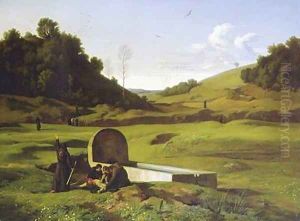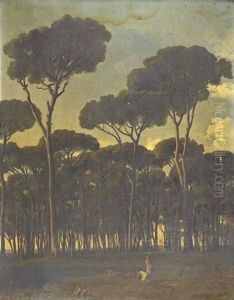Jean-Paul Flandrin Paintings
Jean-Paul Flandrin, born in Lyon, France, on March 23, 1809, was a notable French painter of the 19th century. He is best known for his clear and precise style and his work in the Neoclassical tradition. Flandrin came from a family of artists and initially trained under his brother, Hippolyte Flandrin, a well-known portraitist, before moving to Paris to further his education.
In Paris, Flandrin became a student of the famous French painter Jean-Auguste-Dominique Ingres, who was a major influence on his style and artistic development. Flandrin's adherence to the Neoclassical tradition was evident in his focus on clarity of form, smooth brushwork, and the use of historical and mythological subjects. He won the prestigious Prix de Rome in 1832, which allowed him to study in Rome at the French Academy.
While in Italy, Flandrin's exposure to the works of Renaissance masters such as Raphael further shaped his approach to painting. He spent much of his time studying and copying the frescoes and paintings of the Italian Renaissance, which would later be reflected in the compositional techniques and serene qualities of his own works.
After his return to France, Flandrin received numerous commissions for religious and historical paintings, as well as for portraits. Some of his most recognized works include 'St. Clair Healing the Blind' and 'Jesus and the Little Children'. He was also commissioned to decorate several churches in Paris, including the church of Saint-Germain-des-Prés and Saint-Vincent-de-Paul, where he created large-scale frescoes that are considered some of his masterpieces.
Flandrin was a respected teacher and influenced a generation of artists as a professor at the École des Beaux-Arts in Paris. His emphasis on drawing and form made a lasting impact on his students. He was also elected to the Académie des Beaux-Arts in 1856, which was a testament to his standing in the French art community.
Jean-Paul Flandrin passed away on March 21, 1864, in Rome, while working on a series of frescoes. His legacy is marked by his contribution to the Neoclassical movement and his role in the art education of the period. His work remains appreciated for its elegance, simplicity, and devotion to classical ideals.

